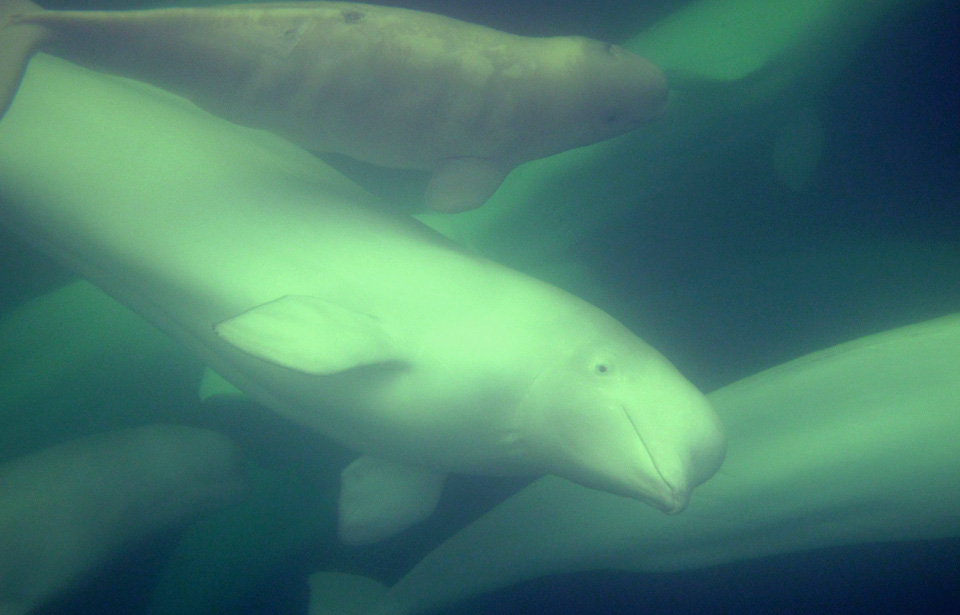Pollution kills countless ocean creatures, impacting hardest on coastal waters, the areas richest in biodiversity and the marine resources we depend on most. At least 80 per cent of this waste comes from land, through networks of streams, rivers, wetlands, and lakes. And just about every human activity — from how we get around to how we cultivate crops — contributes to the problem. Some major factors are:
- Industrial pollutants are discharged into our waters and released into air. They include heavy metals, like mercury, lead, and other toxic chemicals. Once airborne, they can travel thousands of kilometres before being deposited. Such contaminants can linger for years, building up in the bodies of wildlife and humans, and they can cause cancer, liver damage, reproductive problems, and birth defects.
- Household hazardous wastes, such as paints, solvents, pesticides, disinfectants, bleach- and ammonia-based cleansers, and corrosive chemicals in oven and drain cleaners, find their way into landfills and storm sewers, leaching into ground water and then into lakes, rivers, and oceans.
- Municipal sewage, containing human waste, run-off, and toxic pollutants, flows into water by the billions of litres every day — about twenty percent of it untreated.
- Agricultural run-off, containing pesticides, fertilizers, and manure, washes into streams and out to sea. Phosphates and nitrates, contained in fertilizers and manure, act as nutrients, speeding up the aging of water bodies. Manure can spread bacteria that threatens beaches and shellfish.
- Oil spills ravage marine environments. Spectacular tanker accidents eject millions of litres of crude oil into oceans. Yet, this source re p resents only five per cent of the 2.3 million TONS of oil products that enter our seas, mostly from smaller operations of ships, offshore rigs, and refineries. Oil kills thousands of sea ducks and many other ocean species through suffocation or poisoning. Another 300 million litres of oil, largely leaked from cars, drain into storm sewers each year.
- Radioactive contamination from nuclear waste discarded in the ocean may work its way up the marine food web.
- Marine debris — rope, cans, cigarette butts, fast food containers, and an endless stream of other flotsam and jetsam — litters our seas and beaches. Mostly nonbiodegradable, it remains in the marine environment for years, riding tides and currents to distant shores like a floating minefield. Leatherback seaturtles and dolphins mistake plastic bags and balloons for jellyfish, then die of starvation when these materials clog their intestines.
Countless seals, whales, and birds become injured or die every year from entanglements in fishing gear, six-pack rings, and other floating trash. Lost nets strip the seas of life, diminishing fishers’ catches. Marine debris also harms seafarers by damaging boat propellers, blocking water intake valves, and causing accidents.
Pollution Prevention Projects
Assess the Mess
- Learn how your community is contributing to ocean pollution. Visit such sites as power plants, landfills, incinerators, industries, and farms. Watch for signs like oil spots on roads, litter, slicks near industrial outfalls, and shoreline erosion.
- Monitor water quality by testing for pH (acid versus alkaline) levels, nutrients (nitrogen or phosphorus), turbidity (lack of water clarity), and the presence of beneficial macro invertebrates (aquatic insects, snails, worms, and crayfish). Water quality testing kits are sold at most science supply stores.
Find Out What’s Being Done
- Learn if your community is reducing sources of landbased pollution. For example, does it have properly functioning sewage treatment facilities? Design a questionnaire, asking people what they feel is your community’s biggest waste-disposal problem, if they recycle, compost waste, use reusable shopping bags, and safely dispose of household hazardous wastes.
Cut Solid Waste Off at Its Source
- Nip marine debris in the bud: Reduce waste by refusing to buy excessively packaged goods, by purchasing foods in bulk, and by boycotting throwaway products. Pack your lunch in reusable containers. Organize a recycling program by setting up bins for paper, aluminum, plastic, and glass.
- Wage a campaign against the release of helium balloons into the environment.
- Launch a ship-to-shore pollution prevention project, urging fishers and mariners to bring trash ashore and encouraging ports and marinas to provide garbage facilities. Investigate what a cruise ship does with its waste at sea.
Stem the Tide of Land-based Pollution
- Remind your community that hazardous wastes should never be dumped into storm drains. Stencil whale silhouettes or slogans like “Save Our Seas — No Toxics, Please” on curbsides. (Remember to get permission from your municipality first.)
- Discard toxic wastes, such as motor oil, paint stripper, and weed killer, at proper disposal sites — never down the drain. Organize a community collection day for hazardous materials.
- Purge pesticides from your schoolyard and create wildlife habitat for amphibians, bugs, and birds that control pests naturally.
- Use phosphate-free detergent. Eliminate garden fertilizers to reduce the quantity of phosphorus and nitrogen creeping into water bodies. These nutrients cause algal blooms, depriving aquatic creatures of oxygen.
- If your community has no sewage treatment facilities, raise public awareness of the need and urge your municipality to take constructive action.



